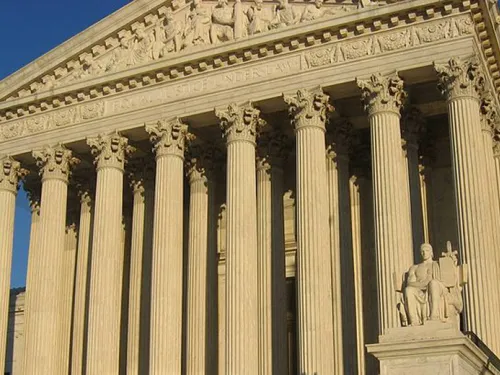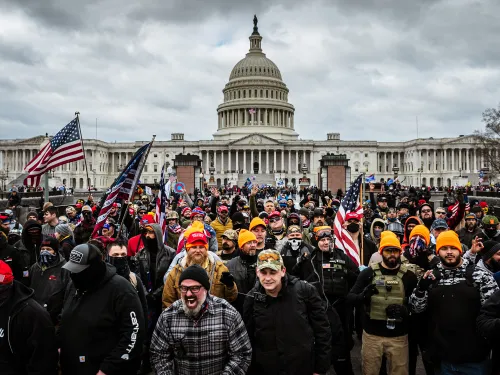November 24, 2010
Occupation 101: Voices of the Silenced Majority is an anti-Israel propaganda film that provides a distorted historical overview of the Israeli-Arab conflict in order to portray Israel as the perennial aggressor and Palestinians as the eternal victim.
The film combines historical archival clips and interviews with prominent anti-Israel activists and pundits, including Paul Findley, the founder of the Council for the National Interest (CNI); Neta Golan, a co-founder of the International Solidarity Movement (ISM); Phyllis Bennis, a co-founder of the US Campaign to End the Israeli Occupation; Richard Falk; and William Baker, a former right-wing extremist and author of the anti-Semitic book Theft of a Nation. The film’s narrator is Alison Weir, founder of If Americans Knew, an organization that produces and disseminates propaganda intended to de-legitimize U.S. support for Israel.
The film attempts to show that in 1947-1948 Jewish forces possessed a far superior power vis-à-vis the Arab militias and invading armies. As a visual demonstration of this point, the film uses footage from archived material that is actually documenting Israeli forces from the 1967 Six-Day War. The anachronistic misplacement of relatively modern tanks and guns is designed to reinforce the film’s erroneous claim that Israel was implementing a preplanned “ethnic cleansing operation” against the Arab population. There is no acknowledgment of any Israeli security considerations.
In its attempt to delegitimize Israel, the film portrays it as an artificial foreign entity that was created by a colonialist power, the British, and sustained through the support of today’s superpower, the U.S., against the interests of the indigenous population. It minimizes Jewish connection to the land and the international legitimacy given to the State of Israel, as well as Israel’s success in creating a vibrant democratic state.
At the same time, the film plays down Palestinian accountability, portraying Palestinian and Arab violence as almost a non-factor in the conflict. Some of the interviewees denounce suicide bombings as a counterproductive tactic, but the film contextualizes such bombings as “weapons of the weak.” For the most part, the film simply ignores the issue of terrorism, portraying all outbreaks of Palestinian violence as popular and legitimate reactions to injustice and oppression. For example, the film’s narrator whitewashes the 1929 pogroms against the ancient Jewish communities in Safad and Hebron as a reaction to land confiscations.
To further justify Palestinian violence, the film makes a false analogy between Israel and apartheid South Africa, claiming that Israel’s law is fundamentally discriminatory against its non-Jewish citizens. The film incorporates footage from demonstrations against the apartheid regime in South Africa and marches of the American civil rights movement in an effort to put Palestinian violence in the context of struggle against entrenched injustices.
The second intifada is described in the film as a popular uprising against occupation without any serious discussion of the wanton civilian deaths that characterized it. It also ignores the major role the terrorist group Hamas has played during and after the second intifada and Hamas’s extremist agenda, which is obviously unrelated to civil rights. Instead, the film refers to Hamas only as the legitimate democratic choice of the Palestinian people.
In contrast to the film’s treatment of Palestinian violence, it dismisses Israeli attempts to reach a peaceful resolution as insincere and discounts Israel’s security needs. For example, the film condemns Israel’s security barrier, calling it the “separation wall,” in an obvious reference to the apartheid system. The narrator, Weir, asserts that the barrier was built merely “to confiscate land for expansion of illegal settlements not for security reasons,” ignoring the evident decline of suicide bombing inside Israel since the barrier’s construction.
In a portion that deals with Israel-U.S. relations, the film implies that Israel controls the U.S. government and the American media. During the film, Weir, asserts that the reason the film was made is because relevant information about the conflict is normally withheld from the American public by the media for political reasons. The film describes a conspiracy to prevent access to information. One interviewee, Falk, claims that “the citizenry of this democratic society [the U.S.] is systematically deprived of access to the real facts.” Another interviewee, Findley, asserts that this has resulted in a “total lack of freedom of speech” in the U.S. According to Findley, this is the result of the combined efforts of AIPAC, Christian Evangelists and the media.
Finally, one of the most offensive aspects of the film is its subtle use of images of Jesus and the crucifixion to portray Palestinian suffering. It alludes to the ugly and false deicide charge against the Jewish people. For example, when a representative of a Catholic relief agency is being interviewed about the plight of Palestinian Christians, the camera zooms in on a painting of Jesus on the cross. In another instance, when a Palestinian woman talks about wanting to protect her children from the Israeli army, the camera shows a painting of Baby Jesus cradled by the Virgin Mary. The film also incorporates images of a demonstration in which Palestinian protesters have tied themselves to crosses adorned with the Palestinian flag. And during a segment with Baker he argues that “some of the first converts to the teachings of Jesus were Palestinians,” a nonsensical statement in terms of historical facts.
Occupation 101 was written, directed and produced by Sufyan and Abdallah Omeish. Their brother is Esam Omeish, former president of the Muslim America Society (MAS). MAS sponsored the films Washington DC premier and featured the creators as speakers at its events. Since its release in 2006, the film has been shown at anti-Israel events around the country, particularly at college and university campus events.









